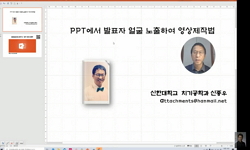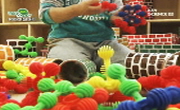박경리는 1958년부터 1961년 사이에 『새벗』과 『학원』에 아동 · 청소년 소설을 발표했다. 본고에서는 박경리의 아동·청소년 소설을 소녀 · 소년 주인공들의 ‘애착대상’에 대한 ‘분리...
http://chineseinput.net/에서 pinyin(병음)방식으로 중국어를 변환할 수 있습니다.
변환된 중국어를 복사하여 사용하시면 됩니다.
- 中文 을 입력하시려면 zhongwen을 입력하시고 space를누르시면됩니다.
- 北京 을 입력하시려면 beijing을 입력하시고 space를 누르시면 됩니다.

박경리 아동·청소년 소설에서 ‘분리불안’의 해소 방식 연구 = A Study on the Solution to “Separation Anxiety” in the Juvenile Novels of Park, Kyung-ni
한글로보기https://www.riss.kr/link?id=A105508625
- 저자
- 발행기관
- 학술지명
- 권호사항
-
발행연도
2018
-
작성언어
Korean
-
주제어
박경리 ; 아동 · 청소년 소설 ; 애착대상 ; 분리불안 ; 노출 ; 방어기제 ; 중간대상 ; 전치 ; 투사 ; Park ; Kyung-ni ; Children-juvenile Novel ; Attachment Object ; Separation Anxiety ; Exposure ; Defence Mechanism ; Transitional Objects ; Displacement ; Projection
-
등재정보
KCI등재
-
자료형태
학술저널
- 발행기관 URL
-
수록면
275-303(29쪽)
-
KCI 피인용횟수
0
- DOI식별코드
- 제공처
-
0
상세조회 -
0
다운로드
부가정보
국문 초록 (Abstract)
이 연구는 ‘대상관계이론’과 ‘애착이론’을 참고하였다. 박경리의 아동 · 청소년 소설은 불안을 극대화하는 플롯을 사용하여 주인공 소녀 · 소년을 불안한 상황에 노출시키고 그에 대해 작동되는 방어 반응에 따른 불안의 해소 방식을 보이고 있다.
아동 대상의 <돌아온 고양이>와 <은하수>는 전쟁이라는 외상성 사건으로 집과 아버지를 잃은 소녀가 애착대상인 동생과 어머니마저 잃을 위기를 겪고 극도의 슬픔에 놓여 있을 때, 애착대상이 돌아오거나 그를 구할 수 있는 능력을 획득하여 불안이 해소된다. 이때 ‘고양이’와 ‘노래’는 애착대상과 동일시되거나 그와의 유대를 강화시키는 중간대상으로서 억압된 욕망과 감정을 표출하고 그 욕망을 실현시키도록 한다. 청소년 대상의 <솔바람>과 <추억>은 근친상간과 동성애라는 제재로 사춘기 소년, 소녀의 분리불안과 그에 대한 반응을 보인다. <솔바람>은 아버지를 상실한 소년이 삼촌의 사기 행각으로 애착대상과 분리되어 그들의 안위와 상실에 대한 불안을 느끼다 그것을 현실로 맞닥뜨리자, 패륜을 범한 어머니를 버리고 동생의 보호자가 되면서 불안이 해소된다. 여기서 또래 소년 ‘진기’는 삼촌의 전치 대상으로 삼촌에 대한 분노감을 표출하고 그에 대한 사회적 처벌을 암시하여 소년의 법과 질서에 대한 믿음을 회복시키는 데 기여한다. <추억>은 일제 말기 기숙사에서 생활하는 소녀가 열패감을 심화시키다 사랑하는 소녀를 상실하는 결말을 맺는다. 여기서 무턱이 선생은 열패감의 투사 대상으로 사용되어 소녀는 그에게 반항하다 파국적 상황을 맞이한다.
이상에서 살핀 바와 같이 박경리의 아동 · 청소년 소설은 연령별 애착대상 및 심리 구조를 핍진하게 그려내고 있다. 따라서 당대 독자뿐 아니라 오늘날의 독자들에게 심리 치료적 기능을 할 수 있을 것으로 보인다.
박경리는 1958년부터 1961년 사이에 『새벗』과 『학원』에 아동 · 청소년 소설을 발표했다. 본고에서는 박경리의 아동·청소년 소설을 소녀 · 소년 주인공들의 ‘애착대상’에 대한 ‘분리불안’과 그 해소 과정 이야기로 보고 그 해소 방식에 대해 연구하였다. 이것은 박경리 아동·청소년 소설의 심리 치료적 가치를 발견하는 의의가 있다.
이 연구는 ‘대상관계이론’과 ‘애착이론’을 참고하였다. 박경리의 아동 · 청소년 소설은 불안을 극대화하는 플롯을 사용하여 주인공 소녀 · 소년을 불안한 상황에 노출시키고 그에 대해 작동되는 방어 반응에 따른 불안의 해소 방식을 보이고 있다.
아동 대상의 <돌아온 고양이>와 <은하수>는 전쟁이라는 외상성 사건으로 집과 아버지를 잃은 소녀가 애착대상인 동생과 어머니마저 잃을 위기를 겪고 극도의 슬픔에 놓여 있을 때, 애착대상이 돌아오거나 그를 구할 수 있는 능력을 획득하여 불안이 해소된다. 이때 ‘고양이’와 ‘노래’는 애착대상과 동일시되거나 그와의 유대를 강화시키는 중간대상으로서 억압된 욕망과 감정을 표출하고 그 욕망을 실현시키도록 한다. 청소년 대상의 <솔바람>과 <추억>은 근친상간과 동성애라는 제재로 사춘기 소년, 소녀의 분리불안과 그에 대한 반응을 보인다. <솔바람>은 아버지를 상실한 소년이 삼촌의 사기 행각으로 애착대상과 분리되어 그들의 안위와 상실에 대한 불안을 느끼다 그것을 현실로 맞닥뜨리자, 패륜을 범한 어머니를 버리고 동생의 보호자가 되면서 불안이 해소된다. 여기서 또래 소년 ‘진기’는 삼촌의 전치 대상으로 삼촌에 대한 분노감을 표출하고 그에 대한 사회적 처벌을 암시하여 소년의 법과 질서에 대한 믿음을 회복시키는 데 기여한다. <추억>은 일제 말기 기숙사에서 생활하는 소녀가 열패감을 심화시키다 사랑하는 소녀를 상실하는 결말을 맺는다. 여기서 무턱이 선생은 열패감의 투사 대상으로 사용되어 소녀는 그에게 반항하다 파국적 상황을 맞이한다.
이상에서 살핀 바와 같이 박경리의 아동 · 청소년 소설은 연령별 애착대상 및 심리 구조를 핍진하게 그려내고 있다. 따라서 당대 독자뿐 아니라 오늘날의 독자들에게 심리 치료적 기능을 할 수 있을 것으로 보인다.
다국어 초록 (Multilingual Abstract)
For this study, I referred to “object relation theory” and “attachment theory.” In her juvenile novels, Park, Kyung-ni created a plot that maximizes anxiety and exposes the main characters or boys and girls to adverse situations. and showed a way of anxiety relief following defense reaction against it.
In the children novels “Dora-on Goyang-i” and “Eunhasu,” a girl, who had lost her father and house due to a traumatic event during the Korean War, as well as her mother and brother, was in extreme grief, but the return of “attachment object,” helped her gain the ability to save herself and relieve her of anxiety. In this case, a cat and songs are “transitional objects,” which are identified as “attachment objects,” with which she strengthens her ties. Further, this helps her to express her repressed desires and realize them.
On the other hand, the juvenile novels “Solbaram” and “Chu-eok” have incest and homosexuality as subject matters and depict “separation anxiety” of teenagers and their response to it. In “Solbaram,” a boy, who had lost his father and had been separated from his “attachment object,” experienced a deep sense of loss and grief because of his uncle’s fraud. However, when he was confronted with a problem, he was determined to desert his mother, who had committed an immoral act, to be his sister’s guardian. After that, he gained relief from his anxiety. Here, Jin-gi, a boy of his age, is a “displacement object” who displaces his uncle and helps him restore his faith in law and order through expressing his anger toward his uncle and alluding to social punishment for him. In “Chu-eok,” a girl, who lived in a dormitory during the end of Japanese colonial era, suffered from a sense of inferiority and defeat and ended up losing her beloved a friend. The girl projected her sense of inferiority and defeat onto her teacher “Moo-tuki” and fought against her. In the end, she drove herself into a catastrophe.
As can be seen above, Park, Kyung-ni vividly describes attachment objects and the psychology of different age groups in her juvenile novels. Accordingly, it seems that her juvenile novels can have a psychotherapeutic effect on the readers of all times.
Between 1958 and 1961, Park, Kyung-ni published some juvenile novels in juvenile magazines like < Saebut > and < Hakwon >. On observing the main characters’ anxiety about the separation from the “Attachment objects” in the stories of...
Between 1958 and 1961, Park, Kyung-ni published some juvenile novels in juvenile magazines like < Saebut > and < Hakwon >. On observing the main characters’ anxiety about the separation from the “Attachment objects” in the stories of these juvenile novels and the process of these characters overcoming it, I considered the solution of “Separation Anxiety.” This study is significant in the sense that it has identified the psychotherapeutic effects of Park, Kyung-ni’s juvenile novels.
For this study, I referred to “object relation theory” and “attachment theory.” In her juvenile novels, Park, Kyung-ni created a plot that maximizes anxiety and exposes the main characters or boys and girls to adverse situations. and showed a way of anxiety relief following defense reaction against it.
In the children novels “Dora-on Goyang-i” and “Eunhasu,” a girl, who had lost her father and house due to a traumatic event during the Korean War, as well as her mother and brother, was in extreme grief, but the return of “attachment object,” helped her gain the ability to save herself and relieve her of anxiety. In this case, a cat and songs are “transitional objects,” which are identified as “attachment objects,” with which she strengthens her ties. Further, this helps her to express her repressed desires and realize them.
On the other hand, the juvenile novels “Solbaram” and “Chu-eok” have incest and homosexuality as subject matters and depict “separation anxiety” of teenagers and their response to it. In “Solbaram,” a boy, who had lost his father and had been separated from his “attachment object,” experienced a deep sense of loss and grief because of his uncle’s fraud. However, when he was confronted with a problem, he was determined to desert his mother, who had committed an immoral act, to be his sister’s guardian. After that, he gained relief from his anxiety. Here, Jin-gi, a boy of his age, is a “displacement object” who displaces his uncle and helps him restore his faith in law and order through expressing his anger toward his uncle and alluding to social punishment for him. In “Chu-eok,” a girl, who lived in a dormitory during the end of Japanese colonial era, suffered from a sense of inferiority and defeat and ended up losing her beloved a friend. The girl projected her sense of inferiority and defeat onto her teacher “Moo-tuki” and fought against her. In the end, she drove herself into a catastrophe.
As can be seen above, Park, Kyung-ni vividly describes attachment objects and the psychology of different age groups in her juvenile novels. Accordingly, it seems that her juvenile novels can have a psychotherapeutic effect on the readers of all times.
참고문헌 (Reference)
1 박경리, "추억" 학원사 10 (10): 1961
2 박경리, "은하수" 이룸 2003
3 박경리, "은하수" 새벗사 1959
4 윤석중, "윤석중 동요집 카네이션은 엄마 꽃" 교학사 1967
5 앤드류 에이센, "엄마랑 있어야 안심이 돼요" 시그마프레스 2008
6 장수경, "어린이 잡지 『새벗』의 성격과 의의 -1950년대를 중심으로" 한국아동청소년문학학회 (10) : 55-86, 2012
7 정옥분, "애착과 발달" 학지사 2009
8 김현희, "아동을 위한 독서치료 : 이론적 고찰" 한국어린이문학교육학회 2 (2): 2001
9 양돈규, "심리학 사전" 박영사 2017
10 최시한, "스토리텔링, 어떻게 할 것인가" 문학과지성사 2015
1 박경리, "추억" 학원사 10 (10): 1961
2 박경리, "은하수" 이룸 2003
3 박경리, "은하수" 새벗사 1959
4 윤석중, "윤석중 동요집 카네이션은 엄마 꽃" 교학사 1967
5 앤드류 에이센, "엄마랑 있어야 안심이 돼요" 시그마프레스 2008
6 장수경, "어린이 잡지 『새벗』의 성격과 의의 -1950년대를 중심으로" 한국아동청소년문학학회 (10) : 55-86, 2012
7 정옥분, "애착과 발달" 학지사 2009
8 김현희, "아동을 위한 독서치료 : 이론적 고찰" 한국어린이문학교육학회 2 (2): 2001
9 양돈규, "심리학 사전" 박영사 2017
10 최시한, "스토리텔링, 어떻게 할 것인가" 문학과지성사 2015
11 박경리, "솔바람" 학원사 8 (8): 1959
12 김기환, "분리불안장애" 학지사 2017
13 장수경, "박경리 초기소설에 나타난 서사적 지향" 동북아시아문화학회 1 (1): 135-147, 2012
14 장영미, "박경리 아동소설 연구" 돈암어문학회 29 : 245-266, 2016
15 정혜원, "박경리 아동서사 나타난 특징과 의미 -박경리의『돌아온 고양이』와『은하수』를 중심으로- " 동화와번역연구소 (28) : 309-329, 2014
16 안승자, "둥근 달" 성음출판사 1976
17 박경리, "돌아온 고양이" 작은책방 2006
18 박경리, "돌아온 고양이" 새벗사 1958
19 Lavina Gomez, "대상관계이론 입문" 학지사 2008
20 도날드 위니캇, "놀이와 현실" 한국심리치료연구소 1997
동일학술지(권/호) 다른 논문
-
문학치료 활동을 통해 본 서사능력과 공감능력의 상관관계
- 한국문학치료학회
- 김정애 ( Kim Jeong-ae )
- 2018
- KCI등재
-
- 한국문학치료학회
- 오영섭 ( Oh Young-sub )
- 2018
- KCI등재
-
- 한국문학치료학회
- 박미리 ( Park Mi-ri )
- 2018
- KCI등재
-
설화를 통해 본 자기서사 및 자기의 이야기 표출 가능성-치매 환자를 중심으로
- 한국문학치료학회
- 이유경 ( Lee You-kyeong )
- 2018
- KCI등재
분석정보
인용정보 인용지수 설명보기
학술지 이력
| 연월일 | 이력구분 | 이력상세 | 등재구분 |
|---|---|---|---|
| 2028 | 평가예정 | 재인증평가 신청대상 (재인증) | |
| 2022-01-01 | 평가 | 등재학술지 유지 (재인증) |  |
| 2019-01-01 | 평가 | 등재학술지 유지 (계속평가) |  |
| 2016-01-01 | 평가 | 등재학술지 유지 (계속평가) |  |
| 2012-01-01 | 평가 | 등재학술지 선정 (등재후보2차) |  |
| 2011-01-01 | 평가 | 등재후보 1차 PASS (등재후보1차) |  |
| 2010-01-01 | 평가 | 등재후보 1차 FAIL (등재후보1차) |  |
| 2008-01-01 | 평가 | 등재후보학술지 선정 (신규평가) |  |
학술지 인용정보
| 기준연도 | WOS-KCI 통합IF(2년) | KCIF(2년) | KCIF(3년) |
|---|---|---|---|
| 2016 | 0.48 | 0.48 | 0.57 |
| KCIF(4년) | KCIF(5년) | 중심성지수(3년) | 즉시성지수 |
| 0.6 | 0.61 | 1.231 | 0.3 |





 KISS
KISS





